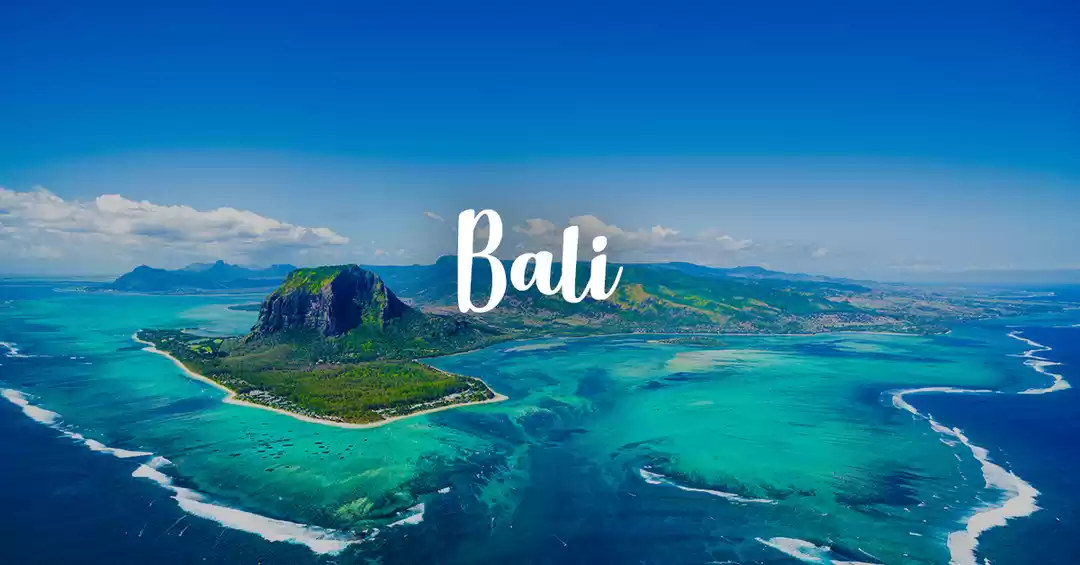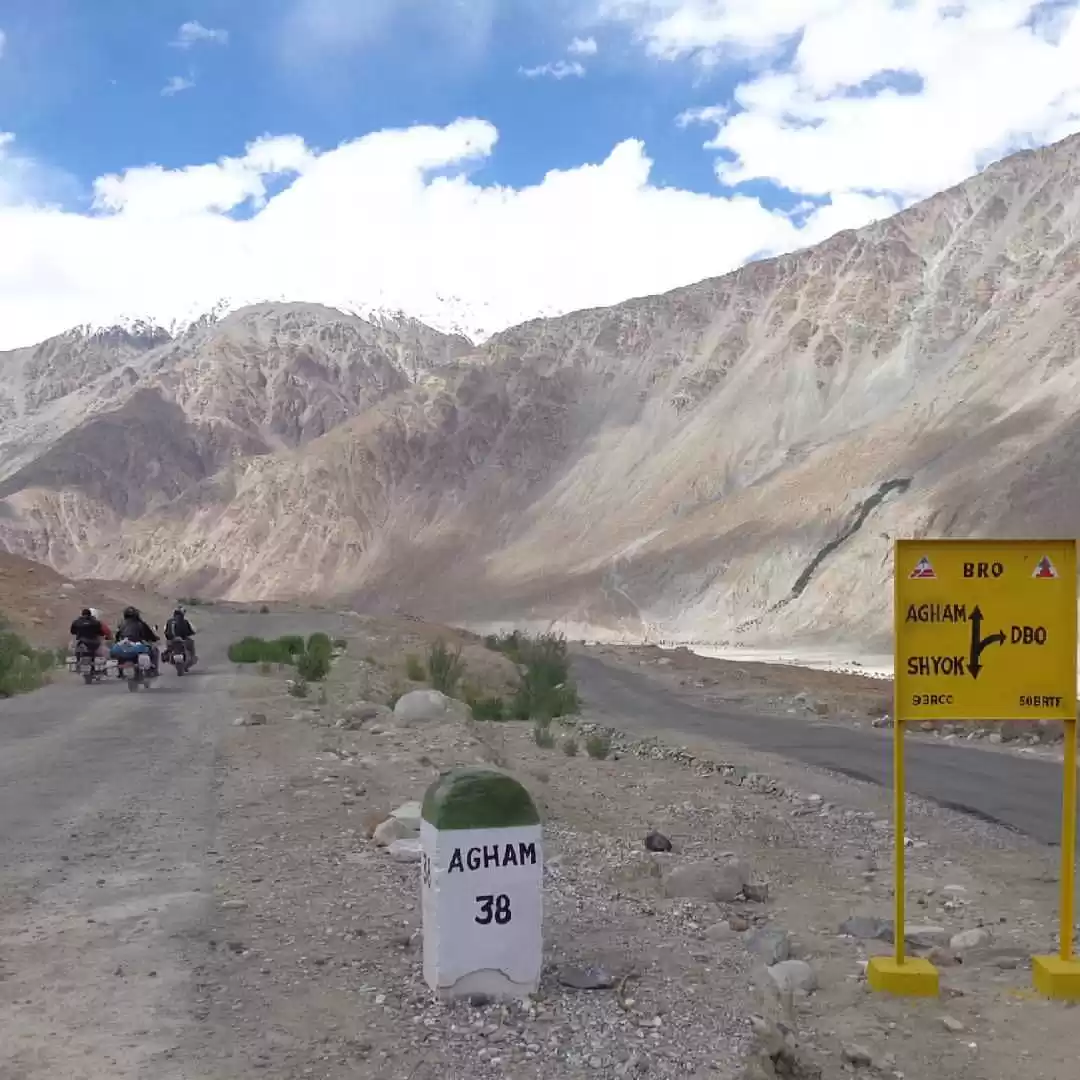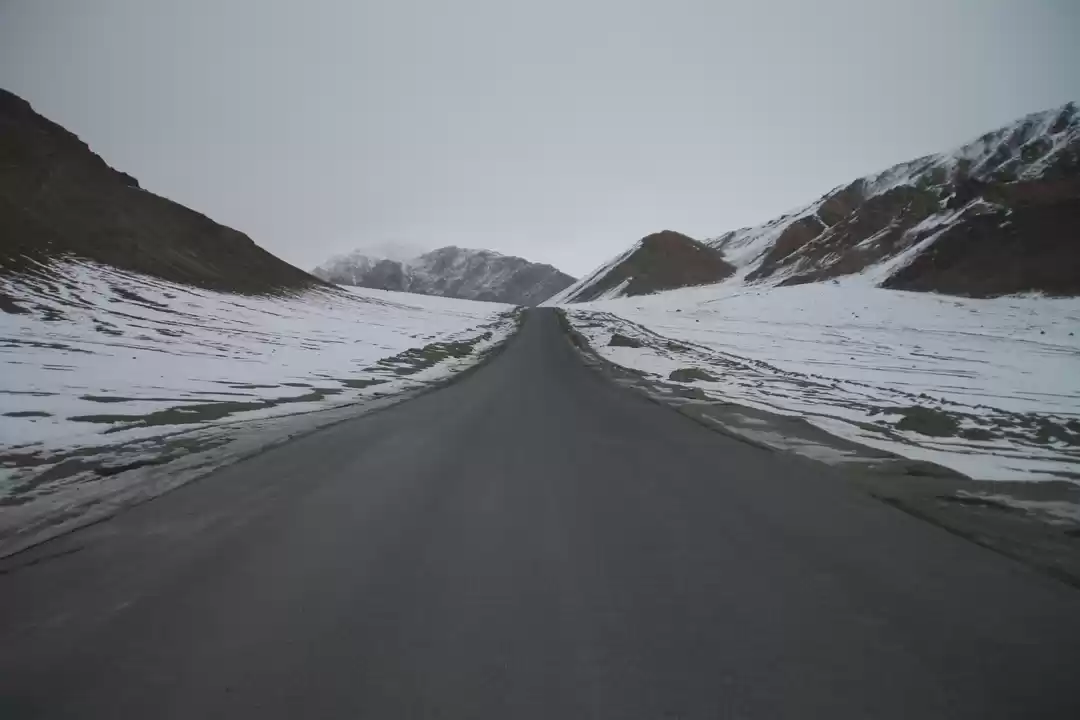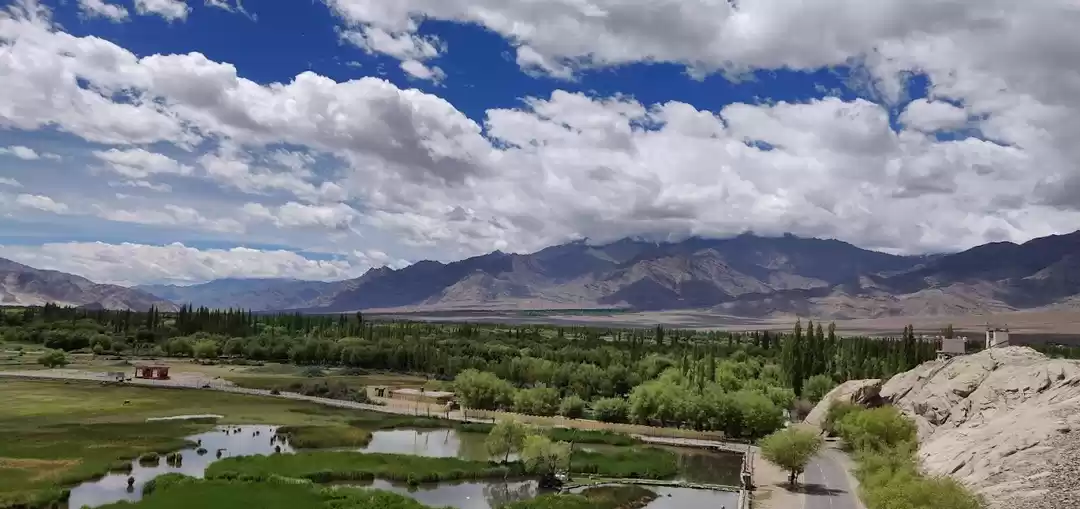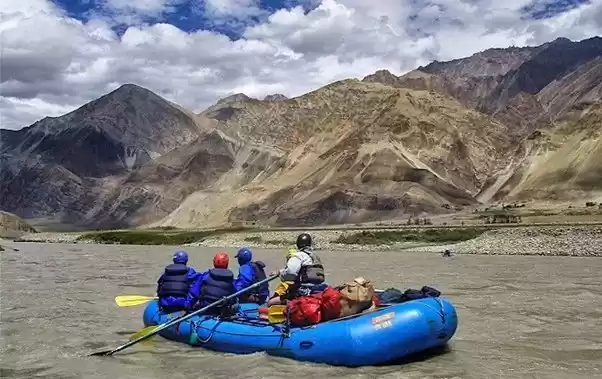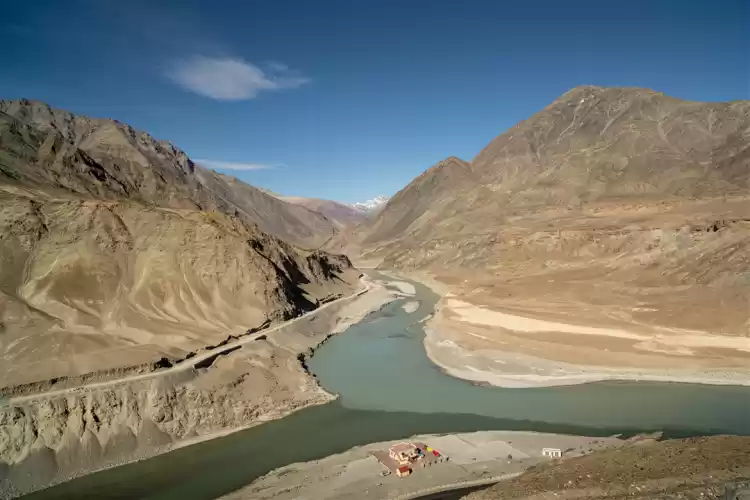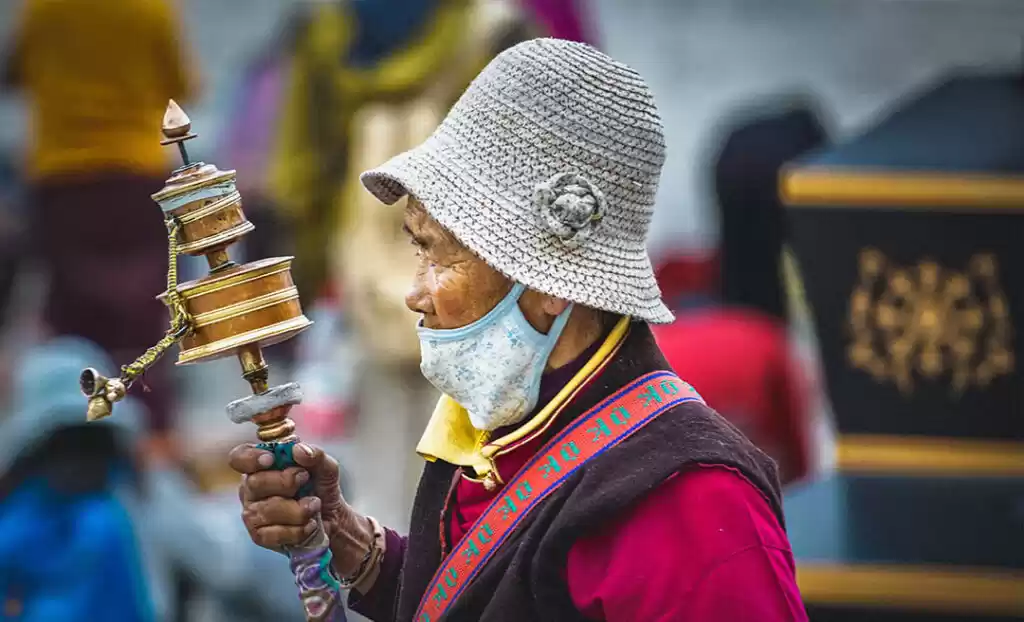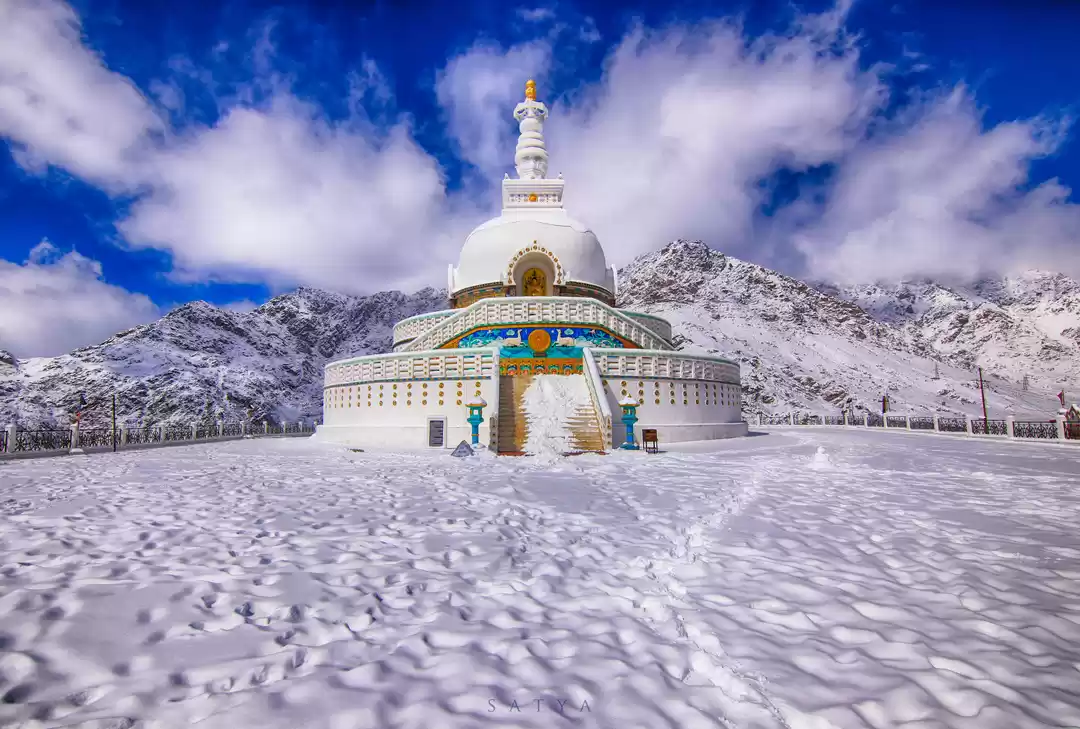Centuries Old Monasteries in Ladakh.
Ladakh which literally means Land of High Passes, Ladakh is known by many names such as Land of Lamas, Land of High Passes and High altitude desert. Ladakh is home to many monasteries which are centuries old and are worth visiting while you are in Ladakh. Some of famous monasteries are
1. Alchi Monastery.

Alchi Monastery or Alchi Gompa is a Buddhist monastery, known more as a monastic complex (chos-'khor) of temples in Alchi village in the Leh District, under the Ladakh Autonomous Hill Development Council of the Ladakh Union Territory. The complex comprises four separate settlements in the Alchi village in the lower Ladakh region with monuments dated to different periods. Of these four hamlets, Alchi monastery is said to be the oldest and most famous. It is administered by the Likir Monastery. The monastery complex was built, according to local tradition, by the great translator Guru Rinchen Zangpo between 958 and 1055. However, inscriptions in the preserved monuments ascribe it to a Tibetan noble called Kal-dan Shes-rab later in the 11th century Dukhang or Assembly Hall and the Main Temple (gTsug-lag-khang), which is a three-storied temple called the Sumtseg (gSum-brtsegs), are built in the Kashmiri style as seen in many monasteries; the third temple is called the Manjushri Temple ('Jam-dpal lHa-khang). Chortens are also an important part of the complex. The artistic and spiritual details of both Buddhist and the Hindu kings of the time in Kashmir and Himachal Pradesh are reflected in the wall paintings in the monastery. These are some of the oldest surviving paintings in Ladakh. The complex also has huge statues of the Buddha and elaborate wood carvings and art-work comparable to the baroque style.Shakti Maira has vividly explained the beauty of this small monastery.
2. Basgo Monastery

Basgo Monastery, also known as Basgo or Bazgo Gompa, is a Buddhist monastery located in Basgo or Bazgo in Leh District, Ladakh, northern India approximately 40 km from Leh. Although the monastery was built for the Namgyal rulers in 1680, Bazgo itself was embedded in the early days of Ladakh and is frequently mentioned in the Ladakhi Chronicles when it was a political and cultural center.[1] In the 15th century, a palace was built in Basgo. The monastery is situated on top of the hill towering over the ruins of the ancient town and is noted for its Buddha statue and murals. The complex comprises the Chamchung, Chamba Lakhang, and Serzang temples, dedicated to the Maitreya Buddha.
3. Hemis Monastery.

Hemis Monastery is a Himalayan Buddhist monastery (gompa) of the Drukpa Lineage, in Hemis, Ladakh, India. Situated 45 km from Leh, the monastery was re-established in 1672 by the Ladakhi king Sengge Namgyal. The annual Hemis festival honouring Padmasambhava is held in early June. The Hemis Festival is dedicated to Lord Padmasambhava (Guru Rinpoche) venerated as the Dance Performance at Hemis Monastery representative reincarnation of Buddha. He is believed to have been born on the 10th day of the fifth month of the Monkey year as predicted by the Buddha Shakyamuni. It is also believed that his life mission is was, and remains, to improve the spiritual condition of all living beings. And so on this day, which comes once in a cycle of 12 years, Hemis observes a major extravaganza in his memory. The observance of these sacred rituals is believed to give spiritual strength and good health. The Hemis festival takes place in the rectangular courtyard in front of the main door of the monastery. The space is wide and open save two raised square platforms, three feet high with a sacred pole in the center. A raised dais with a richly cushioned seat with a finely painted small Tibetan table is placed with the ceremonial items - cups full of holy water, uncooked rice, tormas made of dough and butter and incense sticks. A number of musicians play the traditional music with four pairs of cymbals, large-pan drums, small trumpets and large size wind instruments. Next to them, a small space is assigned for the lamas to sit. The ceremonies begin with an early morning ritual atop the Gompa where, to the beat of drums and the resounding clash of cymbals and the spiritual wail of pipes, the portrait of "Padma Karpo" or "Rgyal Sras Rinpoche" is then ceremoniously put on display for all to admire and worship. The most esoteric of festivities are the mystic mask dances. The Mask Dances of Ladakh are referred collectively as chams Performance. Chams performance is essentially a part of Tantric tradition, performed only in those gompas which follow the Tantric Vajrayana teachings and the monks perform tantric worship. Hemis Monastery existed before the 11th century. Naropa, the pupil of the yogi Tilopa, and teacher of the translator Marpa is connected with this monastery. In this manuscript Naropa (or Naro) meets the "dark blue" (Skr.: nila: dark blue or black) Tilopa (or Tillo), a tantric master, who gives Naropa 12 "great" and 12 "small" tasks to do in order to enlighten him to the inherent emptiness/illusoriness of all things. Naropa is depicted as the "abbott of Nalanda" (F. Wilhelm, Prüfung und Initiation im Buche Pausya und in der Biographie des Naropa, Wiesbaden 1965, p. 70), the university-monastery in today's Bihar, India, that flourished until the sacking by Turkish and Afghan Muslim forces. This sacking must have been the driving force behind Naropa's peregrination in the direction of Hemis. After Naropa and Tilopa met in Hemis they travelled back in the direction of a certain monastery in the now no longer existing kingdom of Magadha, called Otantra which has been identified as today's Odantapuri. Naropa is considered the founding father of the Kagyu-lineage of the Himalayan esoteric Buddhism. Hence Hemis is the main seat of the Kagyu lineage of Buddhism.
4. Lamayuru Monastery.

Lamayuru or Yuru Monastery is a Tibetan Buddhist monastery in Lamayuru, Leh district, Ladakh, India. It is situated on the Srinagar-Leh highway 15 kilometres (9.3 mi) east of the Fotu La at a height of 3,510 metres (11,520 ft), "according to popular tradition," it was originally the foremost Bon monastery in Ladakh; its name means sauvastika and is a popular symbol in Bon for "eternity". Yungdrung is the name of the most popular school of Bon. It is currently affiliated with the Drikung Kagyu school of Buddhism. The Drikung history states that the Indian scholar Naropa (956-1041 CE) allegedly caused a lake which filled the valley to dry up and founded Lamayuru Monastery. The oldest surviving building at Lamayuru is a temple called Seng-ge-sgang, at the southern end of the Lamayuru rock, which is attributed to the famous builder-monk Rinchen Zangpo (958-1055 CE). Rinchen Zangpo was charged by the king of Ladakh to build 108 gompas, and certainly many gompas in Ladakh, Spiti Valley and the surrounding regions, date from his time The gompa consisted originally of five buildings, and some remains of the four corner buildings can still be seen Lamayuru is one of the largest and oldest gompas in Ladakh, with a population of around 150 permanent monks. It has, in the past, housed up to 400 monks, many of which are now based in gompas in surrounding villages. Lamayuru is host to two annual masked dance festivals in the second and fifth months of the Tibetan lunar calendar, when all the monks from these surrounding gompas gather together to pray.
5.Thiksay Monastery.

Thikse Gompa or Thiksey Monastery (also transliterated from Ladakhi as Tiksey, Thiksey or Thiksay) is a gompa (Tibetan-style monastery) affiliated with the Gelug sect of Tibetan Buddhism. It is located on top of a hill in Thiksey approximately 19 kilometres (12 mi) east of Leh in Ladakh, India. It is noted for its resemblance to the Potala Palace in Lhasa, Tibet and is the largest gompa in central Ladakh, notably containing a separate set of buildings for female renunciates that has been the source of significant recent building and reorganisation. The monastery is located at an altitude of 3,600 metres (11,800 ft) in the Indus Valley. It is a twelve-storey complex and houses many items of Buddhist art such as stupas, statues, thangkas, wall paintings and swords. One of the main points of interest is the Maitreya Temple installed to commemorate the visit of the 14th Dalai Lama to this monastery in 1970; it contains a 15 metres (49 ft) high statue of Maitreya, the largest such statue in Ladakh, covering two stories of the building. In the early 15th century, Je Tsongkhapa, the founder of the Gelug School - often called "the Yellow Hats" - sent six of his disciples to remote regions of Tibet to spread the teachings of the new school. Tsongkhapa gave one of his disciples, Jangsem Sherab Zangpo (Wylie: shes rab bzang po), a small statue of Amitayus (the sa?bhogak?ya form of Amit?bha), containing bone powder and a drop of Tsongkhapa's own blood. Tsongkhapa directed him to meet the King of Ladakh with a message seeking his help in the propagation of Buddhism











